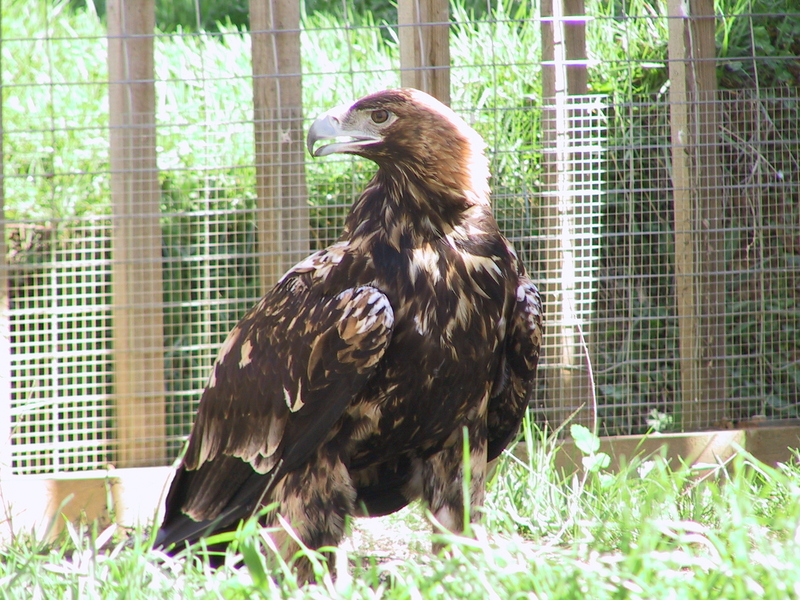Spanish Imperial Eagle (Aquila adalberti) Spanish Imperial Eagle
From Wikipedia, the free encyclopedia
[Photo] Spanish Imperial Eagle (Aquila adalberti). Date 24 March 2002. Author: Antonio Lucio Carrasco G??mez
The Spanish Imperial Eagle, Iberian Imperial Eagle or Adalbert's Eagle (Aquila adalberti) is closely related to the Eastern Imperial Eagle (Aquila heliaca). It occurs only in South and West of Spain, Portugal and possibly northern Morocco. Until recently (Sangster et al., 2002), the Spanish Imperial Eagle was considered to be a subspecies of the Imperial Eagle, but is now widely regarded as being a separate species due to differences in morphology (Cramp & Simmons, 1980), ecology (Meyburg, 1994), and molecular characteristics (Seibold et al., 1996; Padilla et al., 1999).
The Spanish Imperial Eagle is smaller and darker than its oriental cousin, and it is a resident species (A. heliaca migrated to SE during winter). This eagle feeds mainly on rabbits, but it can predate over many other animals, like rodents, hares, pigeons, crows, ducks and foxes. The species is classified as Vulnerable. Threats include loss of habitat and illegal poisoning. There has also been a decline in the Spanish rabbit population, as a result of myxomatosis and other viral illnesses. The current population is estimated at around 400.
In Spain there are currently around 220 pairs reported and 2 in Portugal, and it is making a very slow recovery although it is still an endangered species. A small population is preserved in Do??ana National Park, Spain (descendants from only seven pairs in 1970: Schuhmacher, 1973) but the bulk of its population live in the mediterranean woods of the central and southwestern quarters of the country.
The binomial commemorates Adalbert of Prussia.
